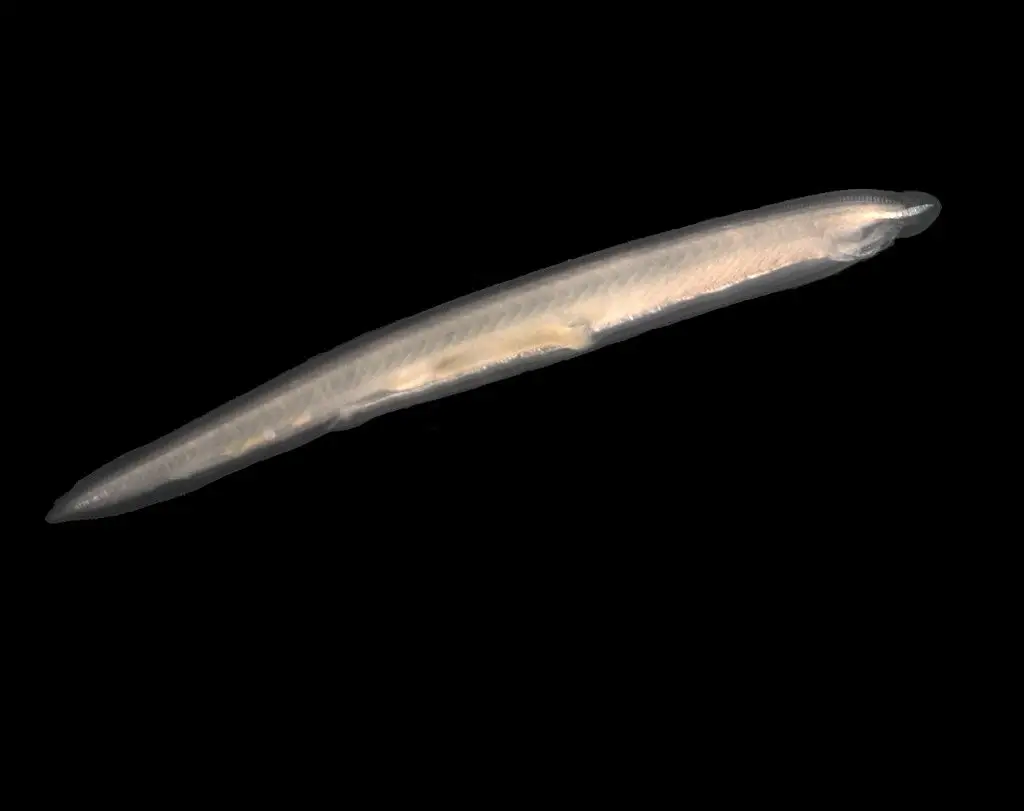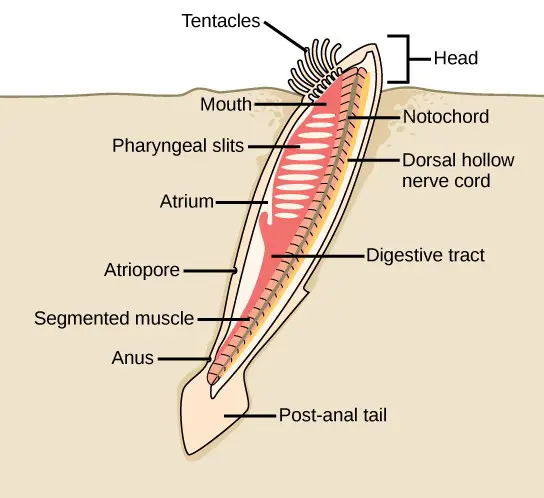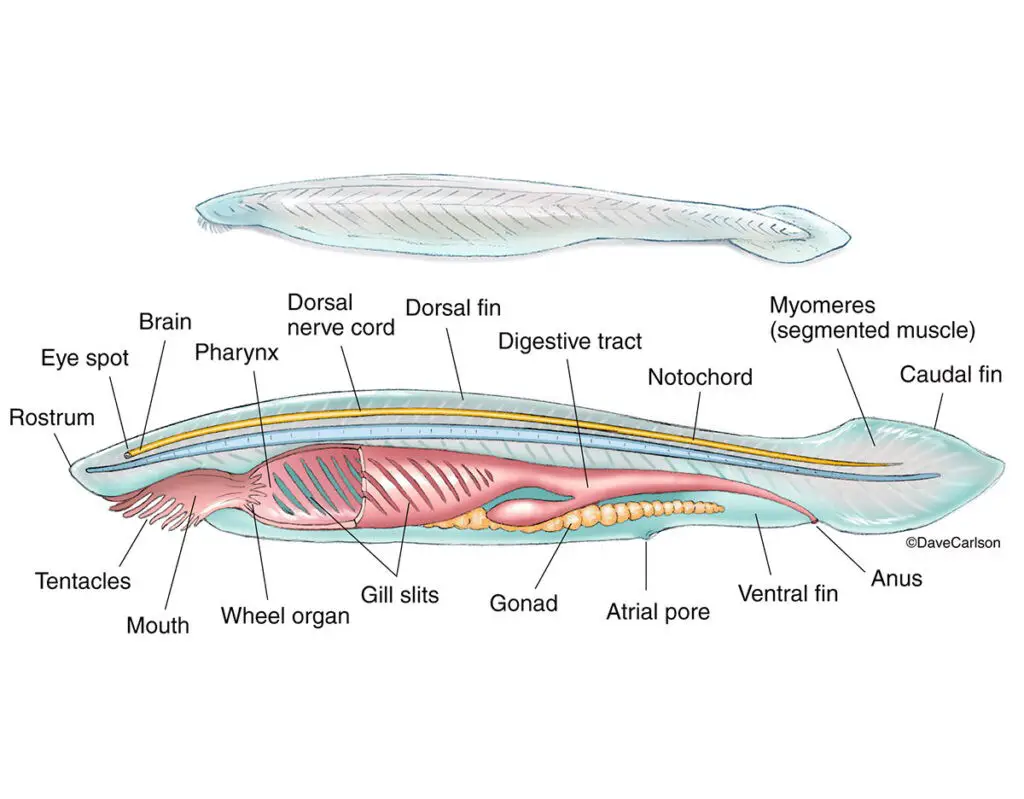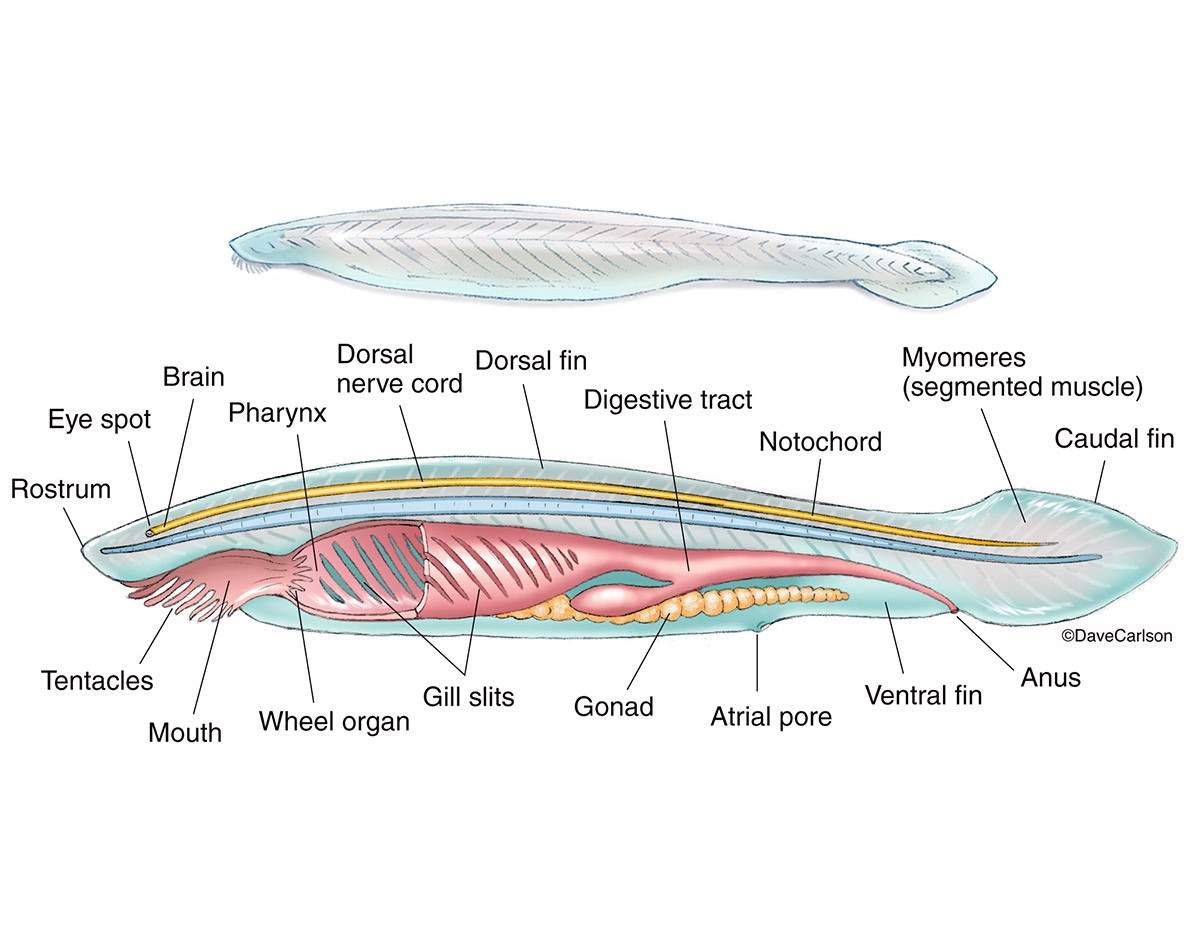Table of Contents
What is Branchiostoma (=Amphioxus):
They are marine fish-like animals, due to the presence of all the three fundamental Chordate characters they are considered as Chordata and placed under Subphylum Chephalochordata. On external appearance, they look like lances so they are also popular as ‘lancelet’ or ‘lancet’.
In Branchiostoma the notochord is present up to the rostrum part, so notochord extends beyond the brain so their subphylum name is Cephaochordata. But in Branchiostoma there is no actual brain or skull, the enlarged anterior part of the notochord is the so-called brain.

Branchiostoma is popular as Amphioxus, the word Amphioxus means both the ends of the body is slender, the body of Branchiostoma is slender on both ends like a lance.
Systematic Position of Branchiostoma (=Amphioxus):
In Branchiostoma dorsal hollow nerve cord, notochord and pharyngeal gill slits present, due to the presence of all the three fundamental Chordate characters they are placed under phylum Chordata. The notochord presents up to their cephalic region so they are placed under Subphylum Cephaochordata.
Branchiostoma does not have a brainbox or cranium so they are placed underground Acrania, Branchiostoma belongs to class Leptocardii and the family Branchiostomidae.
Geographical Distribution of Branchiostoma (=Amphioxus):
Branchiostoma lives in almost all seas around the world but they prefer the warmer ocean. They present in abundance in the Mediterranean sea, along with the coastal areas of Japan and China they found in large numbers.
Habitat and Habits of Branchiostoma (=Amphioxus):
In coastal areas they live in shallow water in the sandy substratum, they dig burrows in the sand and remain dip in the burrows keeping the anterior part outside of the burrow. During the night they come out of the burrow and swim in the water.

Normally they present inside the burrows but when they get disturbed they come outside of the burrow and start swimming actively after some distance they enter into the sand keeping their anterior part downside. Then they take a U-turn and again come back with their anterior part upward direction.
Detailed Study On Branchiostoma Habitat and Geographical Distribution
External Morphology of Branchiostoma (=Amphioxus):
They are small size fish animals with a length of around 6 cm, body is translucent due to the transparent body wall. Body shape is lance-like with anterior and posterior end tapering like a lance.
Body color is whitish body is laterally compressed and streamlined, the body is divided into an anterior trunk with pointed anterior rostrum or snout and posterior slender tail part.
On the ventral side of the rostrum or snout, the mouth aperture is present, the mouth is surrounded by the oral hood. The anterior and lateral part of the rostrum make a projection or fold around the mouth is known as oral hood, the margin of the oral hood has several tentacle-like slender structures known as buccal cirri.
Branchiostoma has three unpaired fins or folds supported by an endoskeletal structure made of connective tissue. On the dorsal side along the mid-dorsal line along the entire length, a dorsal fin is present which joins the caudal fin in the posterior region of the body. Around the tail part, a wide fin is presently known as the caudal fin which is not supported by any endoskeletal structure.
On the ventral side from the caudal fin, a fin present along the mid-ventral line up to half part of the body is known as the ventral fin. On the anterior part of the body along two ventrolateral lines of the trunk two lateral folds are presently known as metapleural folds.
The dorsal and ventral fin is supported by a rectangular gill box made of connective tissue but in the caudal fin, there is no such supporting structure, the fin rays present in Branchiostoma are completely different than the fin rays in fish.
At the base of the ventral fin, a small aperture is present along the mid-ventral line is known as atrial aperture. On the posterior region of the body, the anus opens outside through a small aperture near the caudal fin to the left of the mid-ventral line.
The body wall is transparent and through the transparent body wall, internal muscle layers are visible. Along the two lateral sides, several ‘>’ shaped muscle segments are present, each muscle segment is known as myotomes or myomeres. The myotomes are arranged alternately on two sides and the alternate contraction of the muscle fibers of each myotome produces an undulation movement that able them to swim actively.

Below the myotomes, on each side gonads are arranged in longitudinal rows which are also visible from outside through the transparent body wall.
Detailed Study On External Morphology of Branchiostoma
Body Wall of Branchiostoma (=Amphioxus):
Reference
Hi Everyone!!! Welcome to Imaluop. Imaluop always try to learn some new and he want to share to other people. Here we will try to learn various topics on Science, specially on Biological Sciences.
